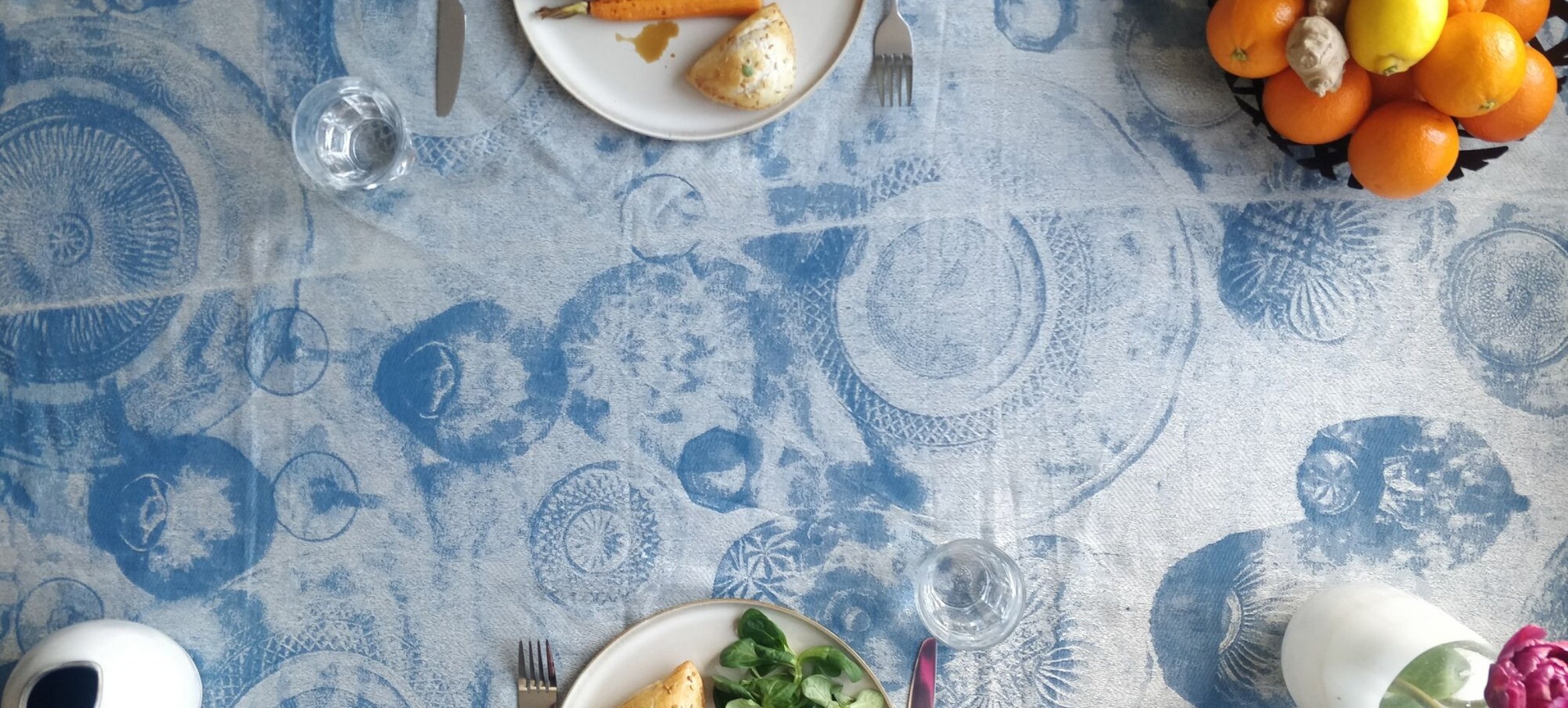SPOTTED: Metropolis M highlights the ecoprints and cyanotypes of BEAR Fine Art alumna Frida Berntsen
- Fine Art
Every year, magazine Metropolis M releases a Graduation Special, featuring work by several finals students who graduate as visual artists. Frida Berntsen is one of the alumni featured in the special. Metropolis M asked Frida the question, "What is the story behind your work?"

At first sight, Blue grapes for the pet cemetery is an abstract painting in which you can make out no more than a few vague, flower-like forms. Frida Berntsen (1997) explains that this is an ecoprint, which involves pressing flowers or other plants between fabric and then steaming them. Berntsen used this technique to capture the flora in her parents back garden. What she likes about the ecoprint is that the flower imprints are actually transferred to the textile and so represent a physical memory of a specific place. By repeating the technique, she also adds depth. ‘Painting, but then again not really’, is how she puts it.
Berntsen originally wanted to be a painter, but she soon realised that she didn’t want to pin herself down to a single medium. Nonetheless, she has retained a painter’s eye. She considers it important that an image can ‘fall apart and back together’, that it never gets completely abstract but doesn’t remain purely figurative either. Tellingly, she describes the ecoprint using the term ‘home craft’. Her graduation presentation also features a tablecloth – Blueprint of matter, blueprint of mind – with an image of crockery on it. For this, Berntsen used a different painterly technique: cyanotype, an early predecessor of photographic printing. She first made a cyanotype on an old tablecloth, before transferring the image onto a newly woven blue damask cloth on which white forms are silhouetted.
In the graduation presentation, the cloth rests on a stack of crockery, like a sculpture, but it could also simply be used as a tablecloth. Berntsen likes the idea that a work of art can become part of daily life. For decades, artisanal techniques were kept outside of ‘official’ art. However, for Berntsen they are appropriate methods for giving the everyday a role in her works of art. In addition, both cyanotype and ecoprint are sensitive to light, which means they reveal the passing of time; another theme that really interests her. Why shouldn't you be able to approach a big theme like that using artisanal, everyday techniques?
Author: Maarten Buser, poet and art critic